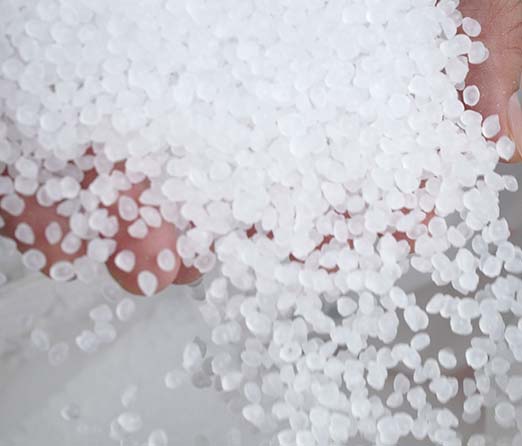There are two basic types of polypropylene (PP): homopolymer (PPH) and copolymer (PPC). Although similar in many ways, each type exhibits distinct differences in appearance and performance. Polypropylene homopolymer has a higher strength-to-weight ratio and is harder and stronger than copolymer. These properties, combined with good chemical resistance and weldability, make it the material of choice for many corrosion-resistant structures. Polypropylene copolymer is slightly softer but has better impact strength. It is tougher and more durable than propylene homopolymer. It tends to have better stress cracking resistance and low-temperature toughness than homopolymer, but other properties are slightly reduced. Due to their wide range of common properties, the applications are almost the same. Therefore, the choice between these two materials is usually based on non-technical criteria.
1. PP homopolymer
PP homopolymer refers to a polymer with a relatively uniform molecular weight distribution produced by the polymerization reaction of polypropylene (PP). They generally have high stability, heat resistance, chemical corrosion resistance, wear resistance and processing performance. PP homopolymer is widely used in the manufacture of plastic products, fibers, films, containers, pipes, wires and cables, etc.
2. PP copolymer
PP copolymer refers to a polymer composed of propylene and some other monomers during the polymerization process. In addition to propylene, commonly used comonomers include ethylene, butadiene, methacrylic acid and acrylonitrile. Because of the different monomer compositions, the physical and chemical properties of PP copolymers will also be different, and the target performance can be achieved through reasonable monomer selection. PP copolymers have good impact resistance, bending performance, cold resistance, chemical corrosion resistance and other advantages, and are widely used in industry, medical, automotive and construction.

3. Difference between PP homopolymer and copolymer
Different monomers: Only propylene monomer is used in the preparation of PP homopolymer; while PP copolymer is based on propylene monomer, and other monomers are added, such as ethylene, butadiene, methacrylic acid, etc.
Differences in physical properties, chemical properties and processing properties: The physical properties, chemical properties and processing properties of PP homopolymers and copolymers are different due to the combination of different monomers. For example, PP homopolymers have higher hardness and strength, while PP copolymers perform better in flexibility, bending and cold resistance.
Different applications: PP homopolymer and copolymer have different application fields. PP homopolymer is often used in plastic products, fibers, films and other fields, while PP copolymer is often used in products in the automotive, medical, power and other industries.
In short, although PP homopolymer and copolymer are both generated from propylene monomer, their monomer composition, property differences and application fields are different.
4. About us
Luoyang Dema Import & Export Co., Ltd. aims to provide high-quality, cost-effective products for global factories, plastic product manufacturers, and material distributors. Luoyang Dema Import & Export Co., Ltd. provides the best PP, PE, PVC, PET, EVA, ABS material solutions for plastic product manufacturers, wholesalers, distributors, distributors, factory owners, processing workshops, etc.
If you are looking for general plastic materials, please feel free to get the latest prices and quotations from Luoyang Dema Import & Export Co., Ltd. The sales team will reply within 48 hours.

